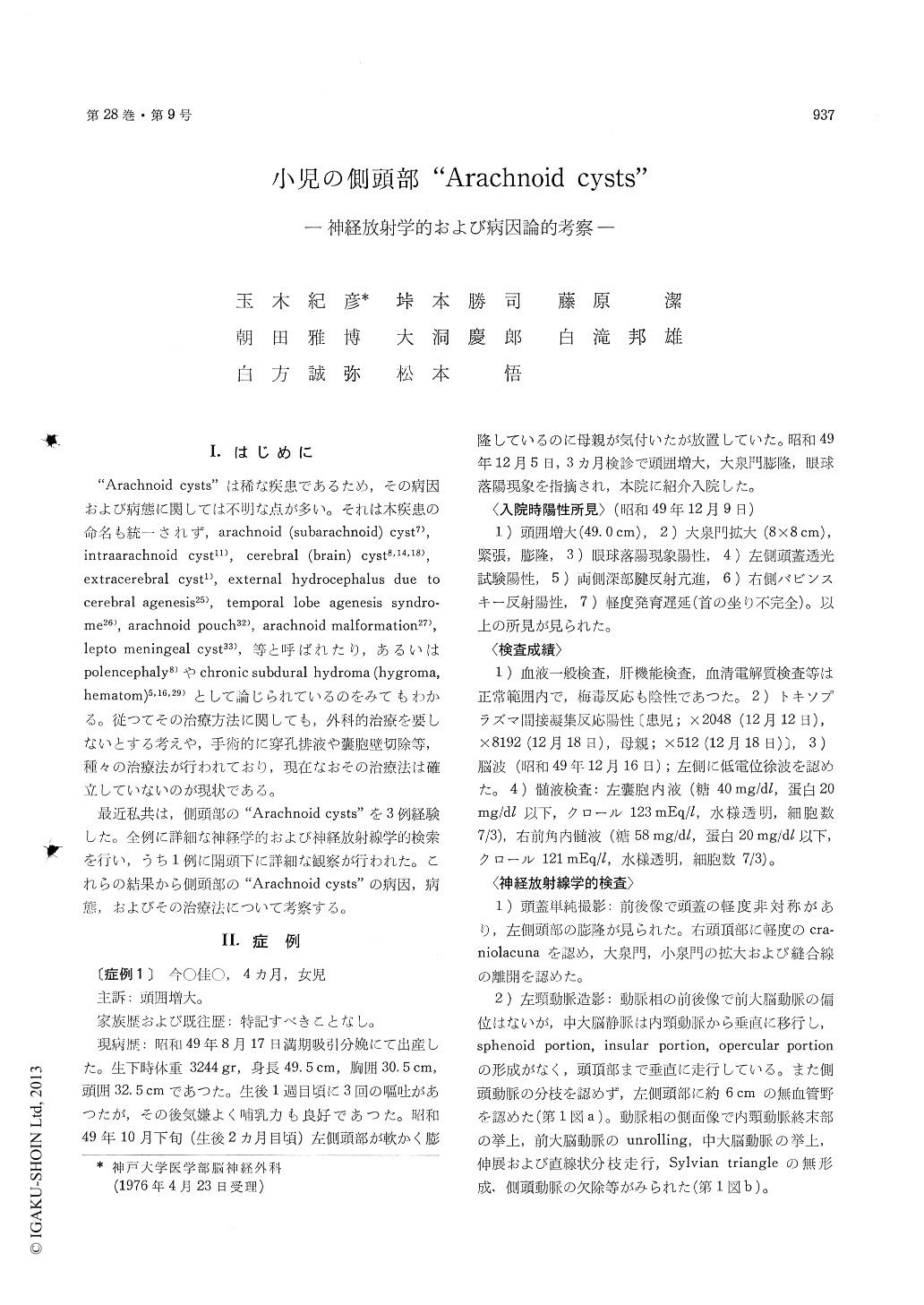Japanese
English
- 有料閲覧
- Abstract 文献概要
- 1ページ目 Look Inside
I.はじめに
"Arachnoid cysts"は稀な疾患であるため,その病因および病態に関しては不明な点が多い。それは本疾患の命名も統一されず,arachnoid(subarachnoid)cyst7), intraarachnoid cyst11),cerebral(brain)cyst8,14,18),extracerebral cyst1),external hydrocephalus due to cerebral agenesis25),temporal lobe agenesis syndro—me26),arachnoid pouch32),arachnoid malformation27), lepto meningeal cyst33),等と呼ばれたり,あるいはpolencephaly8)やchronic subdural hydroma (hygroma, hematom)5,16,29)として論じられているのをみてもわかる。従ってその治療方法に関しても,外科的治療を要しないとする考えや,手術的に穿孔排液や?胞壁切除等,種々の治療法が行われており,現在なおその治療法は確立していないのが現状である。
最近私共は,側頭部の"Arachnoid cysts"を3例経験した。全例に詳細な神経学的および神経放射線学的検索を行い,うち1例に開頭下に詳細な観察が行われた。これらの結果から側頭部の"Arachnoid cysts"の病因,病態,およびその治療法について考察する。
Neuroradiological findings and pathogenesis of the arachnoid cysts of the temporal region in child-ren were presented and discussed. The palin skull x-ray examination showed bulging of the temporal region and enlargement of the middle fossa on the affected side. Angiographic findings were sum-marized as follows :
The anterior cerebral artery was in normal con-figuration and course. The typical findings were seen in the middle cerebral artery system. The middle cerebral artery and its branches were poorly developed. Each portion of the middle cerebral artery, such as sphenoid, insular, and opercular portions, was not fully formed. Sylvian triangle and fissure were, therefore, apastic or dysplastic. The arborization of the middle cere-bral artery was also poor. In the venous phase, the superficial middle cerebral vein, which drains the frontal, the parietal, and the temporal ope-culum, was absent. The deep middle cerebral veins, on the contrary, were well developed and drained the lateral surface of the cerebral mantle to enter the dilated and tortuous basal vein of Rosenthal. The vein of Labbé ran far posteriorly in the parieto-occipital region. The avascular area seen on the phlebogram was larger than that seen on the arteriogram.
These angiographic features described above cor-responded to the operative findings, which showed the aplasia of the frontal and the parietal operculum and the temporal lobe. The insula is, therefore, exposed on the external surface of the cerebral cortex. These pictures may be considered to be a syndrome of the developmental arrest of the cerebral mantle in fetal life.
We suggested that the circulatory disturbances in the telencephalic (superficial middle cerebral) veins from damming back or occlusion of the tentorial sinus during fetal life may be the main factor in the formation of the developmental arrest of the cerebral mantle.

Copyright © 1976, Igaku-Shoin Ltd. All rights reserved.


